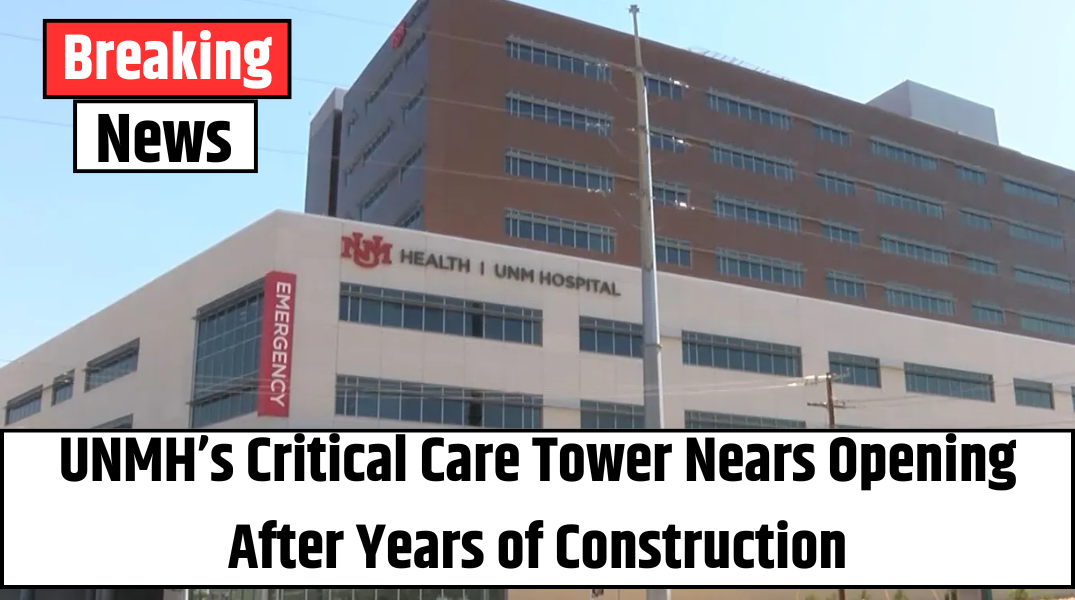ALBUQUERQUE, N.M. – After years of planning and construction, the University of New Mexico Hospital (UNMH) is preparing to open its highly anticipated Critical Care Tower—one of the largest and most advanced healthcare projects in the state. Now in the final stages, the hospital has begun outfitting the tower and training staff in anticipation of receiving its first patients this October.
The $842 million facility, located at the intersection of Lomas and Yale Boulevards, spans eight floors and includes a rooftop helipad to accommodate emergency air transport. With construction now largely finished, UNMH received official approval last week to begin moving in supplies and equipment.
“This is a major step forward in expanding access to critical care in New Mexico,” said Mike Chicarelli, Chief Operating Officer at UNMH. “The tower was designed to optimize both efficiency and the quality of patient care.”
Starting August 1, crews began loading the building with essential items—from medical scanners like MRIs and CTs to more routine supplies, such as furniture and waste bins. The hospital is also bringing in staff to acclimate them to the new space ahead of the official opening.
Also Read – Two Organ Mountain High Students Cheer On UNM
“We want our providers, learners, and staff to know how to navigate this building smoothly,” Chicarelli explained. “In high-pressure situations, every second matters, and familiarity with the layout will save lives.”
Local emergency responders, including Albuquerque Fire Rescue, the Albuquerque Police Department, and the Bernalillo County Sheriff’s Office, are also touring the tower to prepare for emergency response scenarios.
When the facility opens on October 5, six of the eight floors will be fully operational. The remaining two floors are being reserved for future use, giving UNMH the flexibility to expand services as needed.
Hospital officials hope the new tower will help reduce the number of New Mexicans who seek advanced care out of state. “This project is about bringing more capacity to our healthcare system and keeping patients closer to home,” Chicarelli noted.
To meet the needs of the expanded facility, UNMH is actively recruiting new healthcare professionals. While several new hires have already been made, the hospital is still looking to fill approximately 400 additional positions.
With the Critical Care Tower nearly complete, UNMH is poised to deliver a new level of care to the state—offering both cutting-edge technology and increased capacity to meet growing demand.





